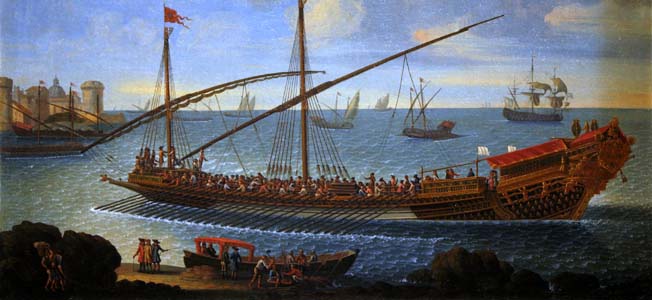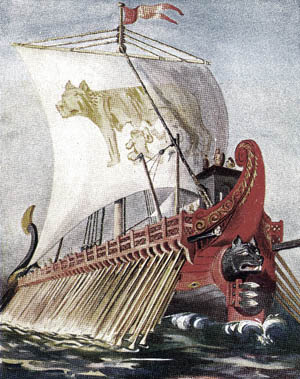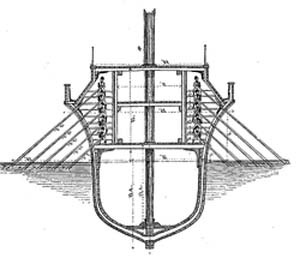Warriors Of Carthage, Quinquereme
 |
| Quinquereme of The Carthage and Roman Navy. Warfarehistorynetwork.com |
The third century BC saw fierce naval competition arise all across the Mediterranean. In the west, the Romans and Carthaginians struggled for control of the sea. In the eastern Mediterranean, the Hellenistic Successor kingdoms of Alexander the Great’s world empire engaged in a costly naval race, each trying to outdo the other by building the biggest ships.
Both the Romans and the Carthaginians had settled upon the quinquereme, or “five,” as their standard warship. It presented, for its day, a good combination of speed, power, and maneuverability in battle. Among the Hellenistic states, however, new and sometimes extraordinary types of warships appeared.
The Quinquereme, Trireme & Hexere
 |
| Quinquereme is a unique rendition of the traditional trireme of it's time |
Various Successor kings constructed sevens, eights, nines, tens, elevens, twelves, fifteens, sixteens, and even thirties and at least one forty. Working out the oaring systems of the better-attested types of war galley in the ancient world is a difficult task. Doing so for these much larger vessels is nearly impossible. For the sixes and sevens, and probably the eights and nines, it is likely that extra rowers were added at one or more of the three levels of oars. As more rowers were added, the ships would have had to become a little wider in the beam to accommodate the extra crew. The much larger galleys would have required even more rowers and likely much greater expenditure to construct.
Larger and Larger War Galleys
 |
| Dido I, Queen Of Carthage, ruled the kingdom during it's golden age. |
The Successor kings, on the other hand, were engaged in a competition for international prestige and influence as well as purely military advantage. Perhaps having the biggest ships was as much a means of impressing the rest of the Hellenistic Greek world as it was of inflicting harm on one’s enemies. Demetrius the Besieger (337-283 BC), for instance, is known to have equipped his extensive fleet with fifteens and sixteens and he had at least one thirteen aboard which he entertained guests. Lysimachus of Thessaly (c.355-281 BC), answered Demetrius with the Leontophoros, a superheavy galley capable of carrying 1,200 fighting men on its deck in addition to the rowers and other crewmen. Later on, Demetrius’s son, Antigonus Gonatas, outdid Lysimachus with an even larger vessel.
The Naval Race Continues
 |
| architecture of the Quinquereme |
The naval race among Alexander’s Successors, much like the Successors themselves, was extravagant, showy, and deeply competitive. In the end, though, the grand fleets of the East, like their armies, would be unable to prevent the region from eventually falling under the domination of the rising power of Rome.
Resource:
https://warfarehistorynetwork.com/daily/military-history/the-quinquereme-in-the-carthaginian-roman-navy/
https://warfarehistorynetwork.com/daily/military-history/the-quinquereme-in-the-carthaginian-roman-navy/



No comments:
Post a Comment